Refine search
Actions for selected content:
26946 results in Economic history
RECONSTRUCTION OF EXPORT SERIES FOR PERU BEFORE THE GREAT DEPRESSION
-
- Journal:
- Revista de Historia Economica - Journal of Iberian and Latin American Economic History / Volume 36 / Issue 3 / December 2018
- Published online by Cambridge University Press:
- 04 June 2018, pp. 393-421
- Print publication:
- December 2018
-
- Article
- Export citation
CHILEAN TRADE 1880-1930: A COMMENT ON THE SOURCES FOR THE AGE OF EXPORTS
-
- Journal:
- Revista de Historia Economica - Journal of Iberian and Latin American Economic History / Volume 36 / Issue 3 / December 2018
- Published online by Cambridge University Press:
- 01 June 2018, pp. 481-500
- Print publication:
- December 2018
-
- Article
- Export citation
LA BANCA DE EMISIÓN ANDALUZA EN PERSPECTIVA NACIONAL (1856-1914)
-
- Journal:
- Revista de Historia Economica - Journal of Iberian and Latin American Economic History / Volume 36 / Issue 3 / December 2018
- Published online by Cambridge University Press:
- 01 June 2018, pp. 423-455
- Print publication:
- December 2018
-
- Article
- Export citation
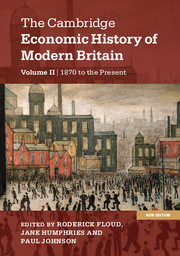
The Cambridge Economic History of Modern Britain
-
- Published online:
- 28 May 2018
- Print publication:
- 09 October 2014
-
- Textbook
- Export citation
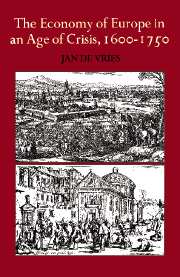
The Economy of Europe in an Age of Crisis, 1600–1750
-
- Published online:
- 28 May 2018
- Print publication:
- 29 October 1976
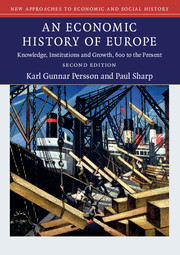
An Economic History of Europe
- Knowledge, Institutions and Growth, 600 to the Present
-
- Published online:
- 28 May 2018
- Print publication:
- 12 March 2015
-
- Textbook
- Export citation
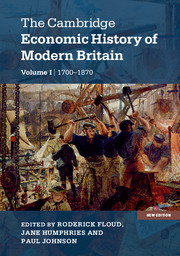
The Cambridge Economic History of Modern Britain
-
- Published online:
- 28 May 2018
- Print publication:
- 09 October 2014
-
- Textbook
- Export citation

An Economic History of Twentieth-Century Europe
- Economic Regimes from Laissez-Faire to Globalization
-
- Published online:
- 28 May 2018
- Print publication:
- 22 September 2016
-
- Textbook
- Export citation
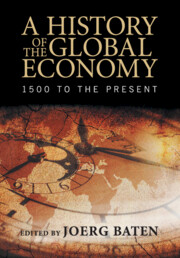
A History of the Global Economy
- 1500 to the Present
-
- Published online:
- 28 May 2018
- Print publication:
- 10 March 2016
-
- Textbook
- Export citation
Contents
-
- Book:
- Brands, Geographical Origin, and the Global Economy
- Published online:
- 25 May 2018
- Print publication:
- 26 May 2018, pp vii-vii
-
- Chapter
- Export citation
3 - Country of Origin and Agricultural Trade during the Nineteenth Century
-
- Book:
- Brands, Geographical Origin, and the Global Economy
- Published online:
- 25 May 2018
- Print publication:
- 26 May 2018, pp 57-84
-
- Chapter
- Export citation
Acknowledgements
-
- Book:
- Brands, Geographical Origin, and the Global Economy
- Published online:
- 25 May 2018
- Print publication:
- 26 May 2018, pp x-xii
-
- Chapter
- Export citation
Index
-
- Book:
- Brands, Geographical Origin, and the Global Economy
- Published online:
- 25 May 2018
- Print publication:
- 26 May 2018, pp 326-334
-
- Chapter
- Export citation
Tables
-
- Book:
- Brands, Geographical Origin, and the Global Economy
- Published online:
- 25 May 2018
- Print publication:
- 26 May 2018, pp ix-ix
-
- Chapter
- Export citation
8 - EU Policy on Geographical Indications
-
- Book:
- Brands, Geographical Origin, and the Global Economy
- Published online:
- 25 May 2018
- Print publication:
- 26 May 2018, pp 218-248
-
- Chapter
- Export citation
Copyright page
-
- Book:
- Brands, Geographical Origin, and the Global Economy
- Published online:
- 25 May 2018
- Print publication:
- 26 May 2018, pp iv-iv
-
- Chapter
- Export citation
6 - From Paris to London
-
- Book:
- Brands, Geographical Origin, and the Global Economy
- Published online:
- 25 May 2018
- Print publication:
- 26 May 2018, pp 157-184
-
- Chapter
- Export citation
9 - ‘Made in’ and Country of Origin in the Post-1945 Period
-
- Book:
- Brands, Geographical Origin, and the Global Economy
- Published online:
- 25 May 2018
- Print publication:
- 26 May 2018, pp 249-284
-
- Chapter
- Export citation
Figures
-
- Book:
- Brands, Geographical Origin, and the Global Economy
- Published online:
- 25 May 2018
- Print publication:
- 26 May 2018, pp viii-viii
-
- Chapter
- Export citation
Dedication
-
- Book:
- Brands, Geographical Origin, and the Global Economy
- Published online:
- 25 May 2018
- Print publication:
- 26 May 2018, pp v-vi
-
- Chapter
- Export citation
